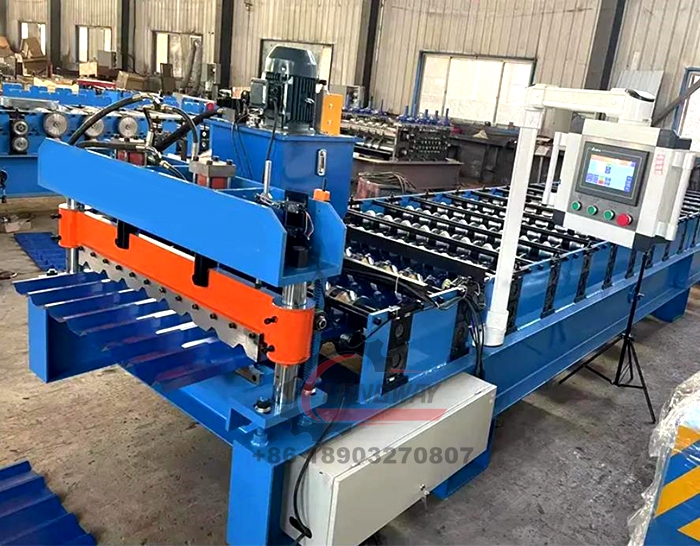Roll Forming Line Operation and Setup-roll form machine
While there is no catch-all roll forming solution for every business, there are some elements of the roll forming process that ring true across operations. Regardless of your size, your industry, and even your end product, roll forming machinery is designed to add efficiency, quality, and ultimately profits to your metal forming processes. The requirements necessary to maintain and operate a roll forming system can be loosely defined depending on your shop's specific needs. In this post, we'll discuss some of the variables that determine roll forming line operation and setup across metal forming industries.
Number and Caliber of Operators
A roll forming line of average proportions, usually is operated by a single technician. Depending on the number of machines in the plant, this tech may or may not be capable of making a roll setup. As lines increase in complexity or as the shape gets longer, wider or heavier, depending upon the degree of automation, a helper may be added to the picture to assist in coil loading or part handling. Sometimes, a roll forming machine is “operator-less” and simply functions as a conveyor between operations. An example of this is the typical refrigerator panel line wherein the flat sheet is automatically conveyed from the trim and notch press to the forming machine and also from the forming machine to the tangent bender.
It is often assumed that a roll forming machine operator must be a “Jack of all trades.” This may be far-fetched, although on some troubleshooting occasions, such attributes might help. The operator should be a good mechanic capable of accepting and utilizing such training as is made available. They do not have to be a tool-maker, as this phase or work has already been accomplished for them.
R72 R101 Multi Ribs metal roof sheet forming machine
Setup Time
Qualified to include the time consumed to strip, clean, and store one set of rolls and to load, and adjust another set; setup time must be predicated on a well organized and readily available roll storage facility, an experienced conscientious operator, and crane or hoist service readily available when needed. The 1½” and 2” spindle mills that are changed over by stripping the rolls from the ends of the shafts can be setup in about 15 minutes per pass, both driven and idle. The 2½” and 3” mills require about 20 minutes per pass. Additionally, if a cutoff is involved, about 15 minutes is needed to remove and replace the die, excluding any internal die changes.
Length changes, which involve a mechanical method of length control, may require repositioning the cutoff target and, roughly, 5 to 10 minutes of time. If a system has an electronic method of length control, changing product lengths and or hole patterns, can be accomplished on the fly, so halting the roll forming operation may not be necessary. Typically, a roll change in a large, wide (6” diameter x 60” wide) mill wherein roll and spindle assemblies are removed through the top of the housing, and replaced with \ preassembled rolls and spindles, requires something on the order of 30 minutes per pass. In the situation where rafted roll formers are employed, the roll stand and tooling is mounted on a plate, typically referred to as a ‘raft’ or ‘cassette,’ the complete raft unit is removed and a second set of rafts with tooling in place are mounted on the machine. Though this setup requires greater capital investment, the changeover time is much faster and the operator does not need to physically remove or adjust the roll tooling.
-
Roof Panel Machines: Buying Guide, Types, and PricingNewsJul.04, 2025
-
Purlin Machines: Types, Features, and Pricing GuideNewsJul.04, 2025
-
Metal Embossing Machines: Types, Applications, and Buying GuideNewsJul.04, 2025
-
Gutter Machines: Features, Types, and Cost BreakdownNewsJul.04, 2025
-
Cut to Length Line: Overview, Equipment, and Buying GuideNewsJul.04, 2025
-
Auto Stacker: Features, Applications, and Cost BreakdownNewsJul.04, 2025
-
Top Drywall Profile Machine Models for SaleNewsJun.05, 2025









